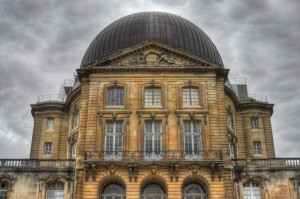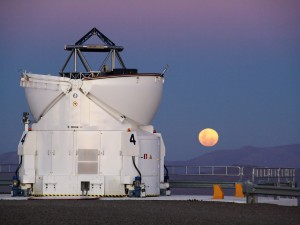
l’Observatoire de Paris-Meudon. Photo credit: Matthieu Bourdon
Today’s image is an HDR photograph of the Observatory of Paris–Meudon. In 1875, when this branch of the Paris Observatory was founded, Meudon stood outside Paris, in a wooded area against the Seine. Today, Meudon is more of a Parisian suburb (though officially in the arrondissement of Boulogne-Billancourt) and probably best known to foreign tourists as the location of the Musée Rodin Meudon at the Villa des Brillants.
While I was doing research on an unrelated topic this week, I came across several mentions of the Meudon observatory in old astronomical bulletins. I am a big fan of the 19th-century version of the Publications of the Astronomical Society of the Pacific. Each edition is a snapshot of the state of astronomy at the time. The A.S.P.’s founder and president, Edward S. Holden, was a prolific writer (well, he had help from observatory staff) and he culled information from other scientific publications, correspondence with other astronomers, and his own travel and research notes to add to each issue of the Publications. For example, here’s a description of the Meudon observatory as reported by Lieutenant Winterhalter:
The Physical Observatory of Meudon (near Paris).*
The accompanying cut is copied from Lieut. Winterhalter’s Report on European Observatories by the kind permission of the Superintendent of the U. S. Naval Observatory (See Publ. A. S. P., Vol. Ill, page 40). The note here given is condensed from the text of Lieut. Winterhalter’s Report.
The Observatory was founded in 1875 and is established in the park of Meudon, not far from Paris. It is by no means completed, so far as instruments are concerned, but its present facilities are employed in spectroscopic and photographic observations. Its distinguished Director and his assistants have taken part in many eclipse expeditions to all parts of the world, and M. Janssen has prosecuted his spectroscopic observations at all altitudes from the level of the sea, to the tops of the Eiffel tower, of the Pic du Midi and of Mont Blanc. The solar photographs of the Meudon Observatory are unrivalled. No description of them need be given here, because members of the society can see a beautiful glass copy of one of them which was presented to the Lick Observatory by M.
Janssen, in a conspicuous place in the main hall of the Lick Observatory. E. S. H.
*M. Jules Jannsen, Director [2]
And here is a paragraph Holden reprinted from Scientific American:
Large Refractor for the Observatory of Meudon.
A great refractor has just been finished and placed in position for Dr. Janssen at Meudon. It is a combined photographic and visual telescope. The two lenses were made by the celebrated Henry Brothers, of the Paris Observatory. The mounting is by Gauthier, of Paris. Both lenses will be mounted in the same tube, which is square and of steel. The visual objective is 82 cm. (32.3 English inches) in diameter, while the photographic objective is 63 cm. (24.8 English inches) diameter. Both lenses are of the same focal length, 17 meters (669 English inches.) The large objective will be the guiding part of the instrument when used for photography. This great telescope is housed in the ruins of the old royal palace, a part of the ruins serving as the tower for the great dome, which dome is 20 meters (66 English feet) in diameter and weighs some 60 or 80 tons. The dome is to be moved by a gas engine of 1 2 horse-power. The observing chair is attached to the dome and moves with it. All the fine circles are to be read from the eye-end by means of electric lights, the electricity for which is generated by an 8-horse-power engine half a mile distant, in what was formerly the royal stables.—Scientific American, November 18, 1893 [1]
That’s a lot of information packed into one small paragraph.
If any of my students are paying attention, this is how I start a research project, by tracking back through scholarly publications to the earliest mention of a building (that I can find, at least). I know web searches are tempting, but it’s usually more profitable (and more interesting) in the long run to spend some time paging through back issues of trade journals and professional bulletins instead. Even more interesting would be tracking back through old French publications, but I’m prepared to give you a break on that. This time.
As always, click on the image of l’Observatoire de Paris-Meudon to download wallpaper for your computer.
——————————
[1] Edward S. Holden, “Large Refractor for the Observatory of Meudon,” Publications of the Astronomical Society of the Pacific, Vol. 6, No. 34 (January 27, 1894), pp. 46-47
[2] Members of the Staff and E. S. H., “The Physical Observatory of Meudon (Near Paris),” Publications of the Astronomical Society of the Pacific, Vol. 4, No. 25 (September 3, 1892), p. 181









